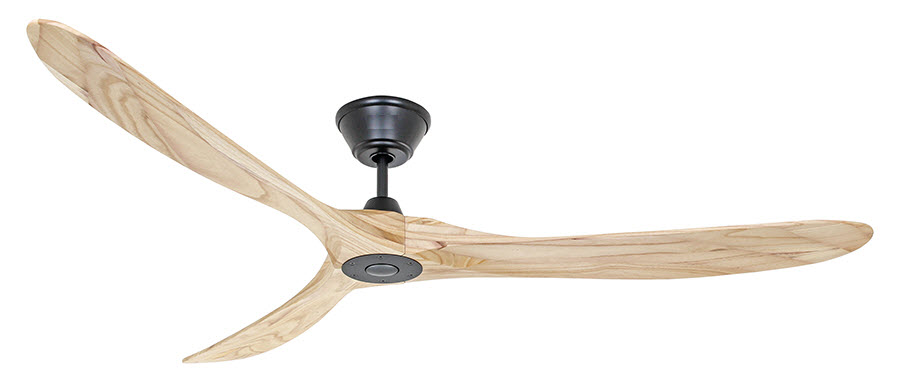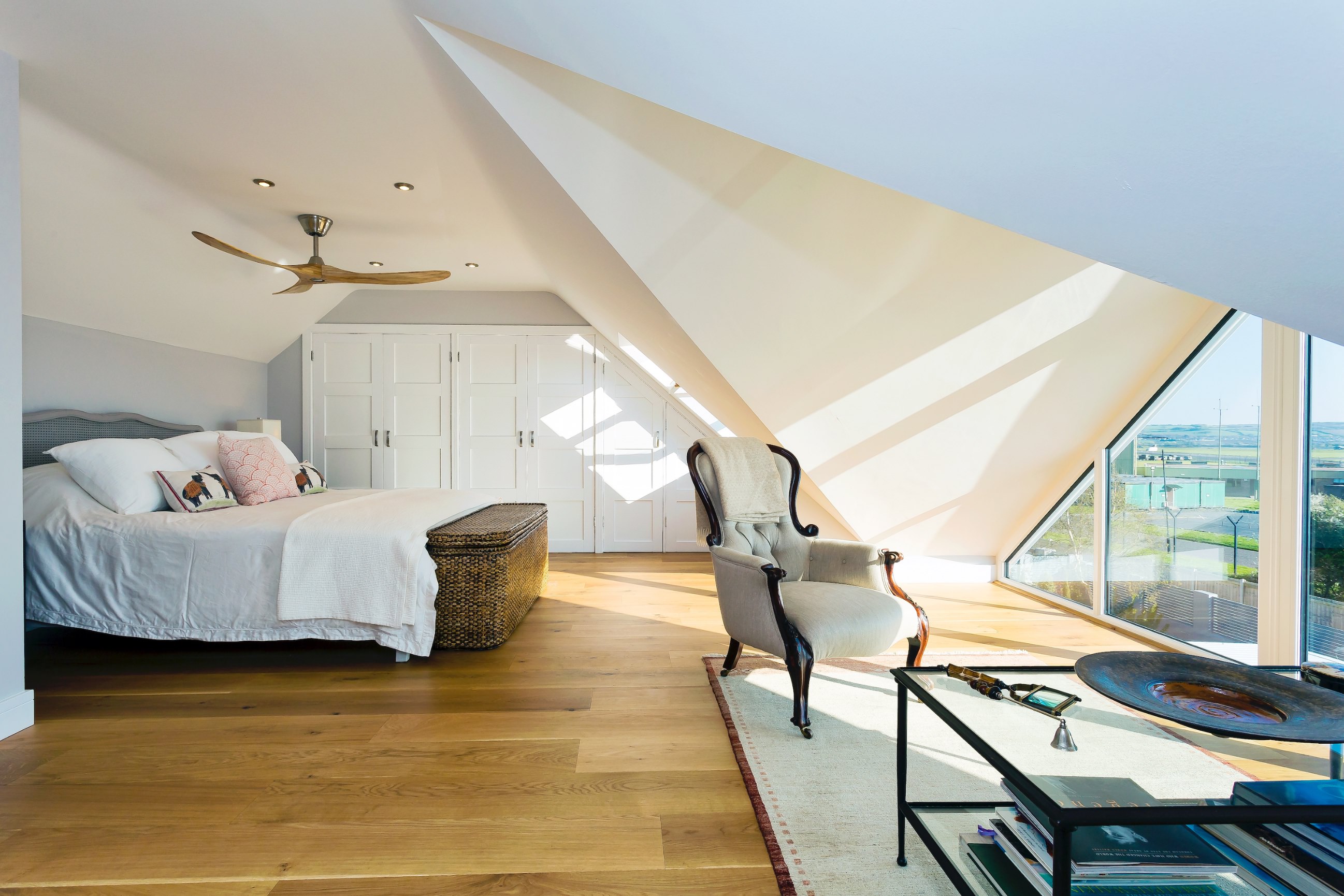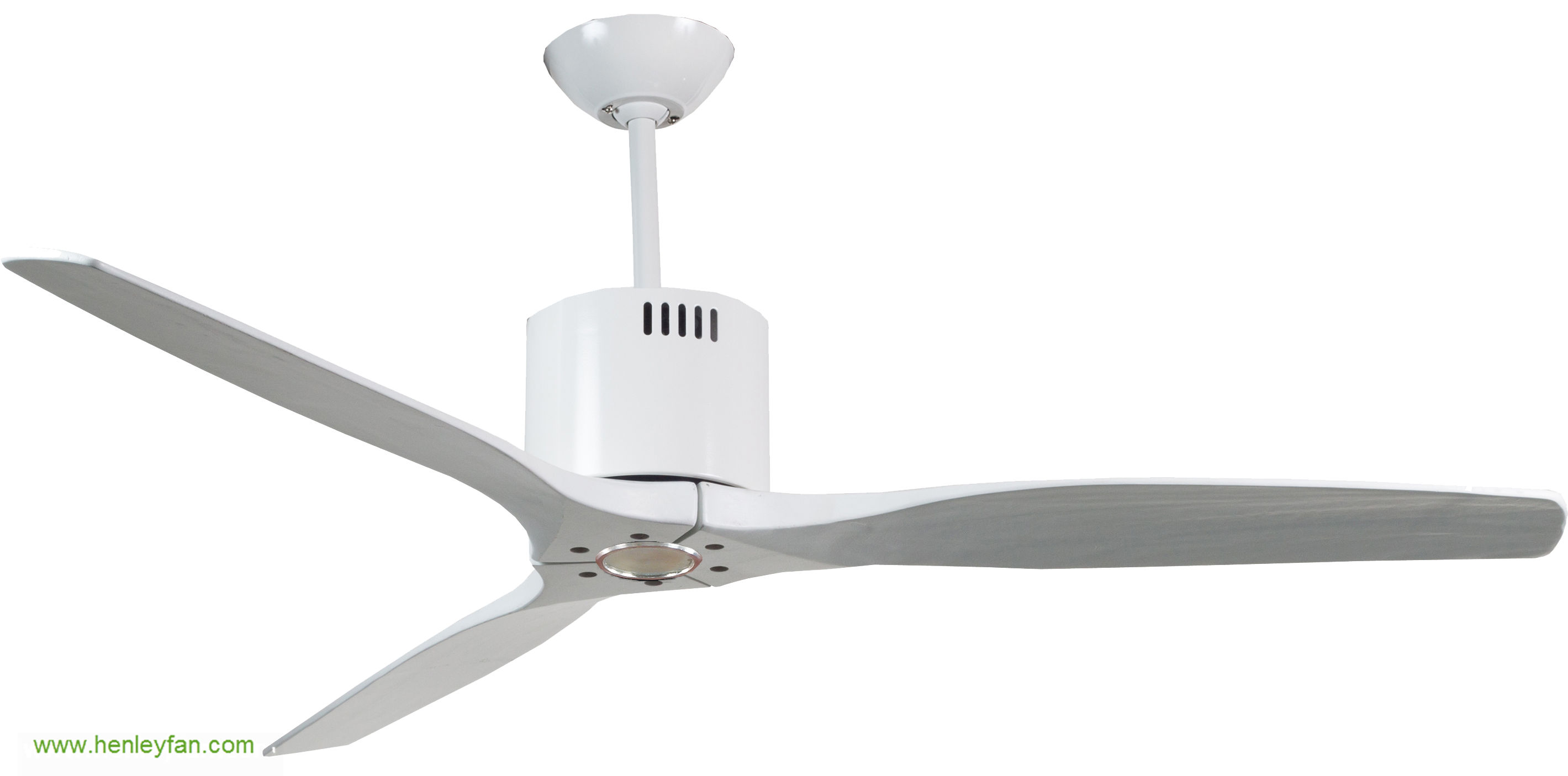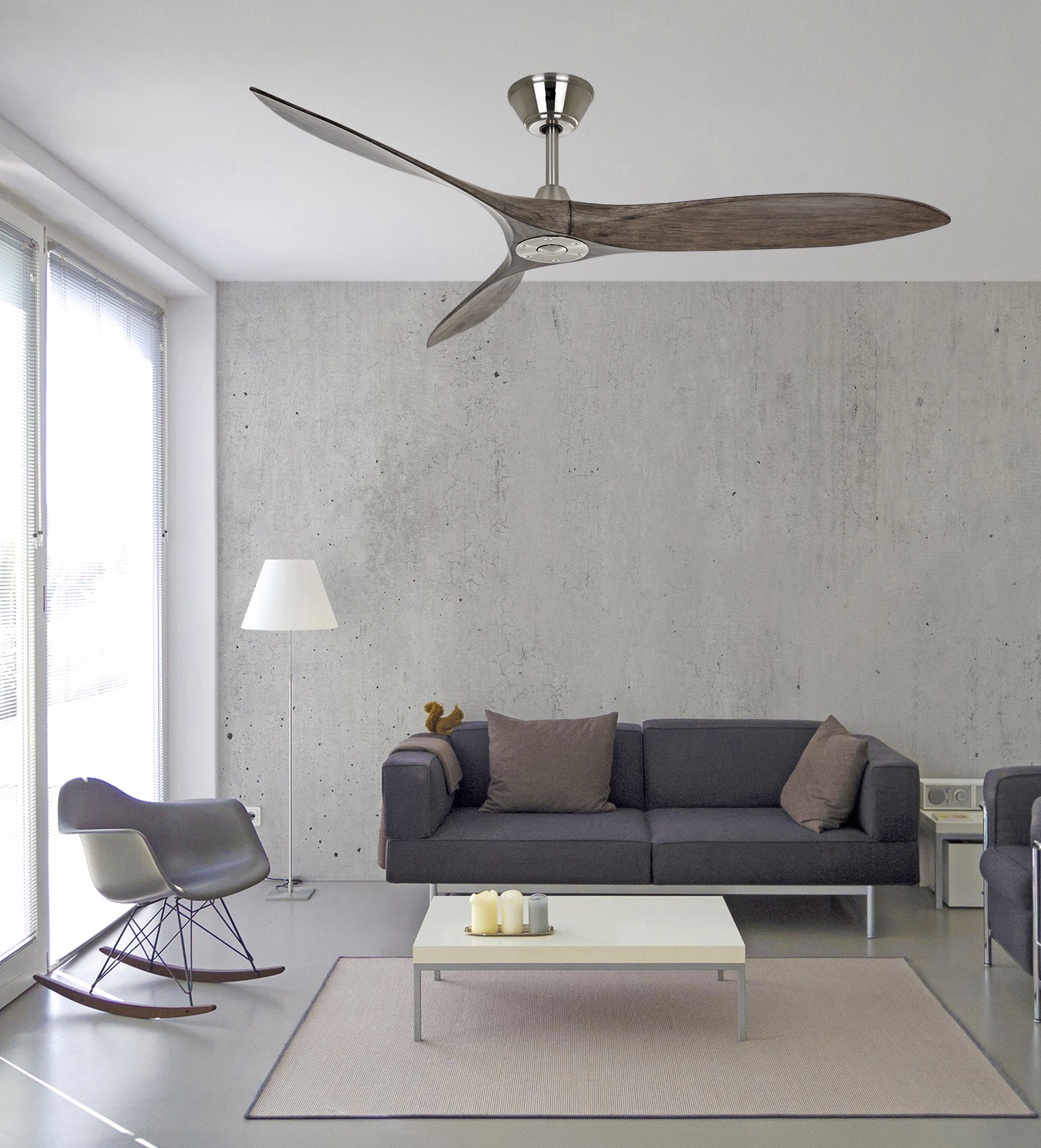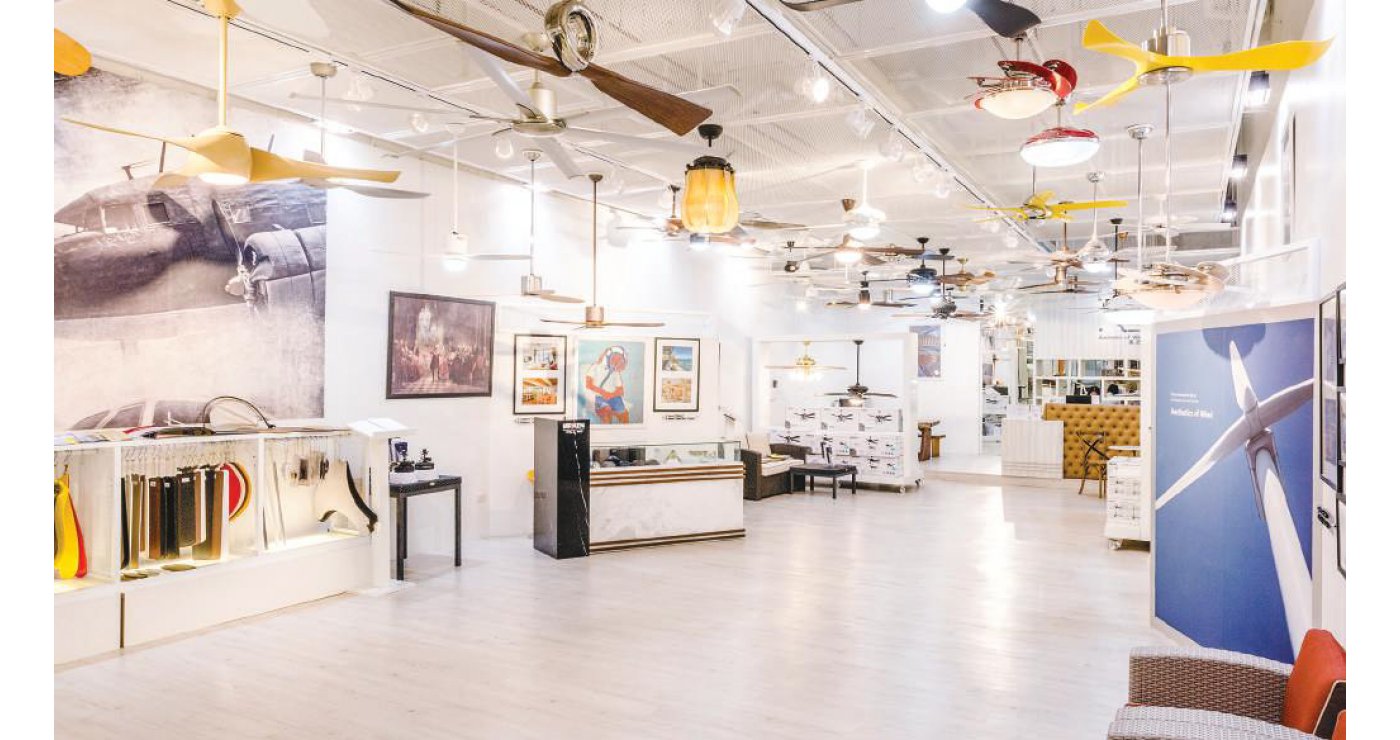Designer Ceiling Fans
What is a Designer Ceiling Fan?
A designer ceiling fan is a more modern version of the traditional ceiling fan that has been around for 150 years or so now. It is characterised by:
- Elegant ceiling fan style – With a 3D beautiful blade design either with sharp edges and surfaces or carved sweeping blades.
- Solid wood blades – Made from light and very strong seasoned hardwood from sustainable forests such as balsa or paulownia with painted finishes and patterns.
- Highly efficient low-energy use – Achieved with a tightly controlled direct current (DC) motor driver – see below. Energy consumption can be as low as 3 watts on the lowest speed and only 30 watts at maximum speed.
- More Expensive – Due to the more complex control and better quality materials the price is often double an equivalent traditional ceiling fan.
The designer genre encompasses the high-end luxury ceiling fan market and are a triumph of form over function whereby they can be a point of interest and focus in a room instead of an ugly necessity.
The UK Ceiling Fan Market – Segments, Pricing & Trends
In recent years the UK ceiling fan market has broadened considerably with additions at each end of the market. The distinguishing features for each segment are detailed below:
- Ultra Cheap – There are some models starting at around £25-30 sold in B&Q and similar online stores that have attractive designs that at first glance look very similar to those costing ten times as much. These will have typically a 1 year warranty and will be a very cheap quality AC ceiling fan with cardboard blades which will quickly make hums and other noises.
- Cheap – £250 – £300 Here you can get a good quality traditional AC type fan with plywood, hardboard or ABS blades. The Motor Warranty will be typically 5-10 years.
- Lower Mid Range – £300-350 Gets you a good stylish AC fan with solid wood blades or a starting DC fan (more energy efficient motor control). The Motor Warranty will be typically 15-20 years.
- Mid Range – £450-550 Here you will find a standard size (52″/132cm) DC version fan with a better quality brushless motor with copper instead of aluminium windings and silicon steel for the laminates, stylish 3D blade shape, carved solid-wood blades made from compressed seasoned hardwood, more energy efficient and 6-speed control. Airflow will be strong without being turbulent but smooth and laminar (which is comfortable for the eyes) Motor Warranty should be 25 years or in our case Lifetime. Our Henley Fan Zephyr model shown below exemplifies this segment.
- Upper Mid – £650-750 This gives extras like LED lights and larger blades moving up to (72″/180cm).
- Top end – There are some very classy models just below the £1000 level and even higher wildly overpriced brands such as Haiku.
As with all things in life you get what you pay for. Don’t be misled by the very cheap Chinese knock-offs that are sold for £150 which are complete junk and although they look very similar (they always do) are noisy, flimsy thin tin motor bodies, poor quality and will certainly not last very long – we have purchased some of these to see just how bad they are and they are shocking! These are typically sold by Spanish and Chinese companies with flashy websites via Google Shopping, ebay and Amazon.
DC vs AC Ceiling Fans – What is the Difference?
A DC fan is fed with mains power exactly the same as for an AC fan but the receiver or driver as it is often called converts the AC into a DC voltage so that the sine wave can be modified precisely for saving energy and speed control. The voltage is then changed back to AC and fed to the motor. This gives two major benefits:
1)Energy saving of up to 70% for the same air flow
2) 6 X Precise speeds of control cf to the 3 of AC motors.
General Ceiling Fan Design Trends
The two biggest design developments we have seen in the last 5 years in the designer ceiling fan market has been twofold. The emergence of a new very efficient compact brushless ECM type DC motor and the use of solid compressed light-wood blades to make them even stronger. This has spawned a whole new generation of modern ceiling fans that not only look amazing but have much improved performance over the traditional and now much cheaper AC motor driven fans.
Furthermore, their reliability as well as their quietness is improved by having no brushes. For maximum energy efficiency they are designed to run at their most efficient at half the maximum speed. Again our Henley Zephyr and Falcon fan ranges have these motors which are rated at 60watts but limited run speed of 36 watts maximum. The new motors and blades are both relatively expensive to produce which accounts for the slightly higher price-point. These two trends and what they have enabled to happen define the new standard for a state-of-the-art designer ceiling fan.
Now beautiful luxurious ceiling fan blade designs can be 3D with carved propeller looking blades as opposed to the traditional 2D blades made out of plywood or worst still hardboard at the bottom end. They are hand finished and balanced to ensure there is no possible wobbling from a set which is usually 3 or 5 blades. These days the motors are much smaller and can even be hidden entirely by the wooden blades, something that was impossible 10 years ago. In terms of control the motor is started by an electronic control with a built in receiver that enables the user to have a handset with a bigger range of speeds than AC, typically six along with reverse and some brands like MrKen do a simulated breeze effect with the speed varying up and down.
The old design AC motors use really cheap start and speed control capacitors which in the cheapest models start to break down after 1-2 years creating hums and buzzes, however in a good brand like Hunter should last 6 or 7 years before this occurs. They can be replaced and each year we have a big demand for these in April/May when everyone switches on their ceiling fans and find they either don’t start or have speeds missing. The same happens with the cheap copper or cheaper aluminium windings and motor lamination epoxy that also has a very short lifespan.
What Interior Designers Look For
Interior designers make their living by making rooms look beautiful. They want things to blend together to make a harmonious whole and so want matching colours, finishes and materials that are contemporary. They also think about focus and the impact on the eye when walking into a room along with the emotions that get stirred as a result. A ceiling fan is typically placed in the centre of a room and so is always going to have an impact. The only question is whether it is good or bad! An old or bad looking design that doesn’t match can not only be ugly itself but make the whole room feel negative and that is not the result you want to achieve after spending thousands of pounds refurbishing and decorating or doing up a room.
We closely watch the interior design trends for colours and finishes as we have to tie-in to these. We speak a lot of interior designers or buyers asking us to supply what interior designers have specified and so can help with the latest tastes. Unless it is a heritage building the current style should be modern, contemporary and fresh with clean simple lines. Our Zephyr fan embodies these qualities into what everyone agrees is a unique and beautiful design. The choice of finishes in the motor body and drop rod can give added impact as in the case above where a light solid wood blade and contrasting matt black motor looks stunning.
White Designer Ceiling Fan Blades
One of the very latest trends in interior design colours has been towards white and off-white. This presents a real challenge for designer ceiling fans since most of them have compressed solid hardwood blades (balsa or Polonia) which can give off small amounts of resin over a long period. This resin in direct sunlight can, even with sealing, sometimes discolour the white and make it turn a yellow shade. This problem can be avoided by using a better quality of higher grade seasoned wood which all our brands use. Furthermore, the wood comes only from independently certified sustainable forests.
We offer our flagship model the Zephyr in a pure lacquered white as well as the new Falcon and Matthews ranges. The MrKen is available in an off-white which is something many interior designers prefer as an alternative to brilliant white.
The alternative to solid wood carved blades is to use ABS (plastic – which can sag over the years if exposed to high heats) or else plywood (a very strong and stable type of wood) which you will find in a more traditional AC ceiling fan design such as the Hunter Savoy or Hunter Seville.
Designer Fan Fashion Trends, Colours & Features
There is a trend and appetite for new colours such as bronze, grey, matt black, dark koa, pewter and antique brass. The result has been the adoption of these finishes in the metal bodies and wooden blades in contemporary modern-styled designer ceiling fans. We don’t include in our discussion the more wacky designs that would only be suitable for those that wanted to make a strong statement such as the one bladed fan or fans with decorative large plastic loops. There are so many designs that come and go that most people would never want to see in their home or restaurant.
The best designer ceiling fans embody simple powerful styling and beauty that is plain for all to see. The Zephyr Propeller ceiling fan (shown above) epitomises this genre and nobody can fail to be impressed with its beauty, style, performance and features. The factory in Taiwan (where all the best quality ceiling fans are manufactured) produces them not only for us but for USA ( called the Maverick) and many other countries. It has been tested and classed as the most energy efficient ceiling fan for a number of years running.
So what are the typical features of a designer fan? :
- Motor – They use a brushless ECM/DC very low energy, high performance motor limited to running at 2/3 of its maximum power. The speeds are often very low giving a stirring effect.
- Airflow – This is strong but delivered as smooth and laminar for comfort.
- Blades – Solid light-wood carved blades, usually hand finished, painted and balanced in sets
- Control – Hand held wifi 6-speed remotes, sometimes using 4G technology
- Finishes – Dark browns, bronzes, matt blacks, brushed nickel and white
- Quietness – There should be no noise whatsoever from the motor. No annoying hums or buzzes from the capacitors, motor windings or motor plates. Our own fans are all on the imperceptible end of the sound scale when tested in the sound labs.
- No wobble – The fan should move smoothly with no wobble whatsoever, even with a long drop rod (we supply extension down rods up to 3m for the Zephyr).
- Light kits – These will be low-energy LED in one or more white colours (eg our Falcon model has a 3 colour white LED)
- Warranty – 25 years or Liftetime for the motor
- Manufacturer – Made by a well established well respected factory with at least 40 years experience in ceiling fan design and production.
- Brand – Sold by a strong solid brand that has been around for at least 15 years with backup in case of any problems.
Design Fan Concept Stores
To showcase their beautiful designs some brands create designer stores. For example MrKen has created a chain of 6 interior design concept stores in Thailand, Japan and Taiwan (similar to Apple) that enable interior designers and customers to visit and see all their models close up. If you are visiting these countries be sure to pop in and experience their flair for design, innovation and style. No other ceiling fan brand in the World has done this with most DIY stores confining themselves to a displaying a handful of cheap and nasty offerings at the edge of their lighting section!
Are Designer Fans Worth The Extra Cost?
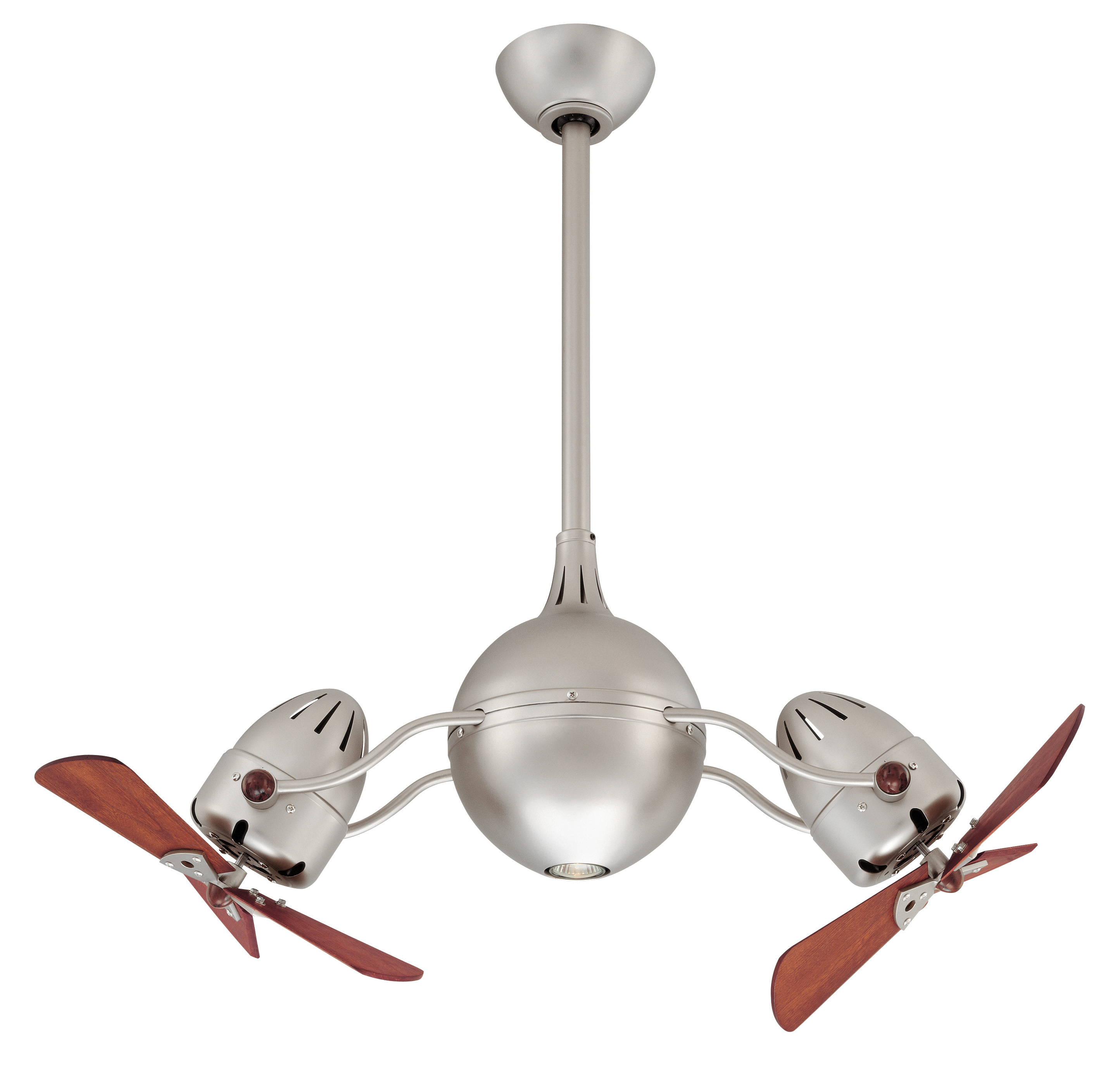
The real answer lies in the application where you wish to deploy a ceiling fan. If it is an up-market restaurant or hotel then they will impress your customers and give you years of faultless service. If it is in a bedroom then quietness is essential for a good night’s sleep and so certainly worth it there. For other rooms that might only be used occasionally then not worth the extra. For rooms that you and others use a lot such as a conservatory or lounge then yes it is certainly worth paying more for and not something you will regret.
A lot of old traditional designs look very over powering and ugly in comparison to a typical designer ceiling fan. Many people never think about upgrading or replacing the ceiling fan. At the end of the day style, beauty and design do matter unless you enjoy living in a communist-era housing project. They matter because it is your home and work environment that you care about and it speaks about your values to others when you invite them into your space.

